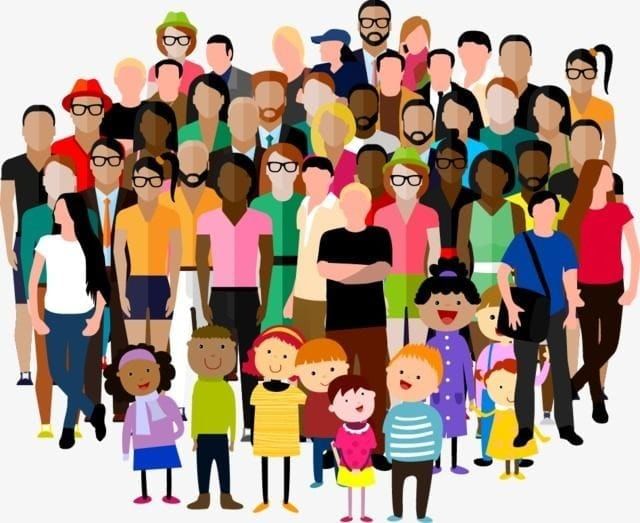Case Based Questions: Large Numbers Around Us | Mathematics (Ganita Prakash) Class 7 - New NCERT PDF Download
Q1: Read the source and answer the question that follows
Amit and Suman were discussing how large numbers help us understand the world. Amit wondered how big one lakh (1,00,000) really is, while Suman explained that a lakh could be a large number depending on what we’re counting. For example, if we count people, one lakh could be the population of a small city. But when it comes to counting small items, like hair on a person’s head, one lakh may not seem that big! They decided to take a trip to a stadium, which could hold over one lakh people, and compare it with other large numbers like crores.

Q1. Which is larger, 1 lakh people or 1 crore people?
(a) 1 crore people
(b) 1 lakh people
(c) They are equal
(d) Cannot be compared
Ans: (a) 1 crore people
Explanation: 1 crore is equal to 100 lakhs, so 1 crore people is larger than 1 lakh people.
Q2. How many zeros are in one crore?
(a) 5 zeros
(b) 7 zeros
(c) 8 zeros
(d) 9 zeros
Ans: (b) 7 zeros
Explanation: 1 crore = 1,00,00,000, which has 7 zeros.
Q3. How many lakhs make up one crore?
(a) 10 lakhs
(b) 100 lakhs
(c) 1000 lakhs
(d) 10000 lakhs
Ans: (b) 100 lakhs
Explanation: 1 crore = 100 lakhs.
Q2: Read the source and answer the question that follows
Ravi and Simran were working on rounding large numbers to make them easier to understand. Ravi wanted to know the population of a city, and Simran suggested rounding it to the nearest lakh to make it easier to talk about. They rounded numbers like the population of a city and the distance to the nearest thousand, lakh, or crore to make quick estimates.

Q1. Round the number 6,72,85,183 to the nearest lakh.
(a) 6,72,00,000
(b) 6,70,00,000
(c) 6,75,00,000
(d) 6,73,00,000
Ans: (d) 6,73,00,000
Explanation: When rounding to the nearest lakh, we look at the ten thousand place. Since 8 is greater than 5, we round up.
Q2. What is the nearest crore for the number 5,67,45,999?
(a) 5,00,00,000
(b) 5,50,00,000
(c) 6,00,00,000
(d) 6,50,00,000
Ans: (c) 6,00,00,000
Explanation: When rounding to the nearest crore, we look at the ten lakh place. Since 7 is greater than 5, we round up.
Q3: Read the source and answer the question that follows
Rahul and Neha were figuring out how much money they could raise for a charity event. Rahul wanted to know how many people would need to donate to raise 1 lakh rupees. Neha explained that if each person donated ₹500, they would need 200 people to raise ₹1 lakh. They also discussed how large numbers like 1 lakh and 1 crore are used in budgeting for large projects and government expenses.
Q1. If each person donates ₹200, how many people are needed to raise ₹1 lakh?
(a) 200
(b) 500
(c) 1,000
(d) 2,000
Ans: (b) 500
Explanation: ₹1,00,000 ÷ ₹200 = 500 people.
Q2. Which number is equal to 10 lakhs?
(a) 10,000
(b) 1,00,000
(c) 10,00,000
(d) 100,000
Ans: (c) 10,00,000
Explanation: 10 lakhs is equal to 10,00,000.
|
41 videos|251 docs|8 tests
|
FAQs on Case Based Questions: Large Numbers Around Us - Mathematics (Ganita Prakash) Class 7 - New NCERT
| 1. What are large numbers, and why are they important in our daily lives? |  |
| 2. How do we express large numbers using scientific notation? |  |
| 3. What are some examples of large numbers used in science and technology? |  |
| 4. How can we compare large numbers effectively? |  |
| 5. Why is it essential to understand large numbers in the context of global challenges? |  |
















